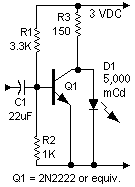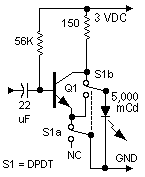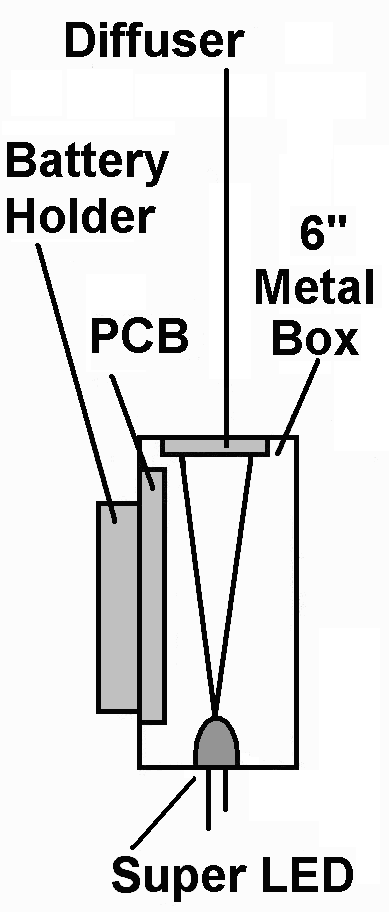BASIC TROUBLESHOOTING. By just watching the LED, you can easily discern signal modulation. The tracer version that I built will do the job just fine. You use the tracer by clipping or plugging it into various monitor stages.
Start with the CD player. Adjust the volume control for best blink on the LED. The blinking is your modulation, or picture information. Got modulation? Then go on to check stage 2. If necessary, readjust the volume. Continue by jumping forward one stage at a time, until you reach the LED matrix.
The bad stage is the one that produces no modulation or inadequate modulation. When you find the weakest link, it's time to examine the circuit for wiring errors. Then you replace bad components or tweak circuit part values. Next, you retest. You repeat the process until you're satisfied.
ADVANCED TROUBLESHOOTING. If you prefer a much more critical test, then actually scan the LED window for pictures. I haven't proven that this will work, but I'm convinced that it will. You be the judge. Email me and tell me how you made out!
OTHER TRACER VERSIONS. I haven't built the deluxe tracer, so I leave the debugging to project builders. Some will want to operate one of the tracers with a 15-volt scanner supply. In that case, you need to change resistors.
To run the "basic" tracer on 15 volts...- R1 is 15K.
- R2 is 680 ohms.
- R3 is 1200 ohms.
- R1 is 470K.
- There's no R2.
- R3 is 1200 ohms.
|
♦ CAUTION. These are calculated, but not tested values. |
I've thought about an advanced tracer that could operate a 24-LED display. That seems like overkill to me, but I've designed a circuit. If anybody's interested in such test apparatus, please give me a holler on the Internet. I'm interested in how well the tracer works with your circuits. Maybe you have an improvement in mind. In future pages, I'll consider those ideas.
Go to Page: 1 2 3 Return

monitor circuit, too!

picture phase
